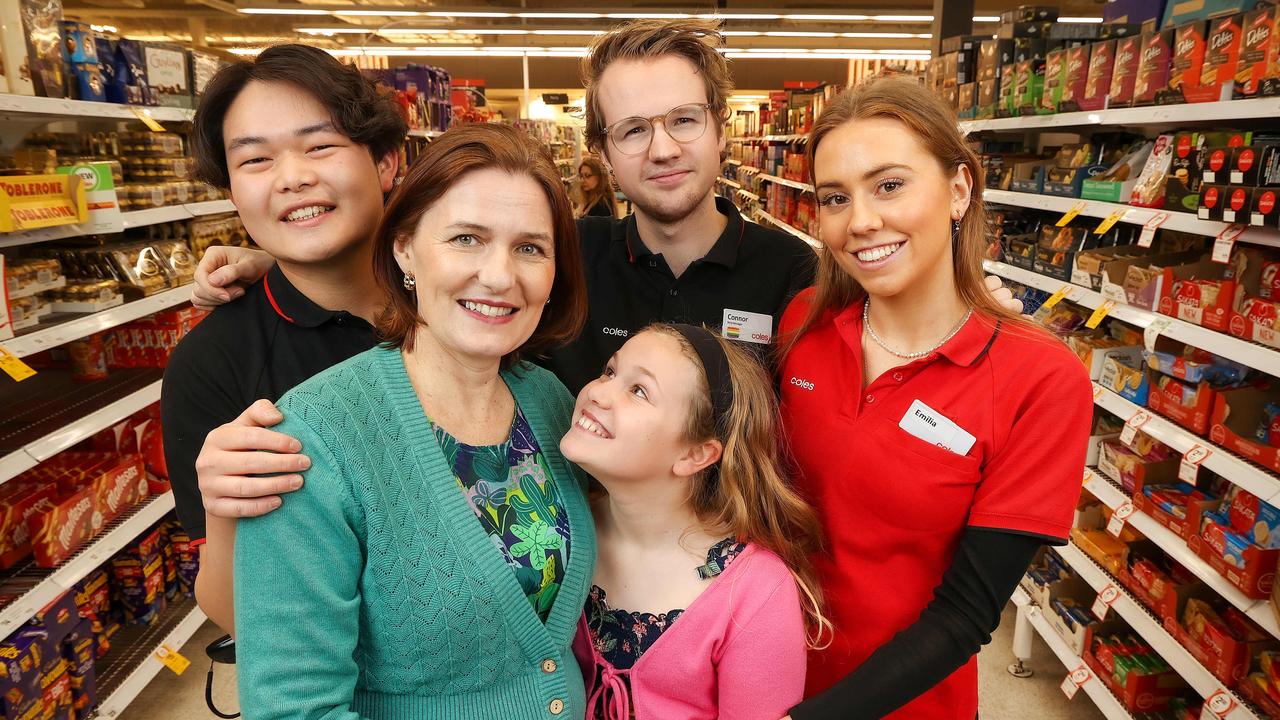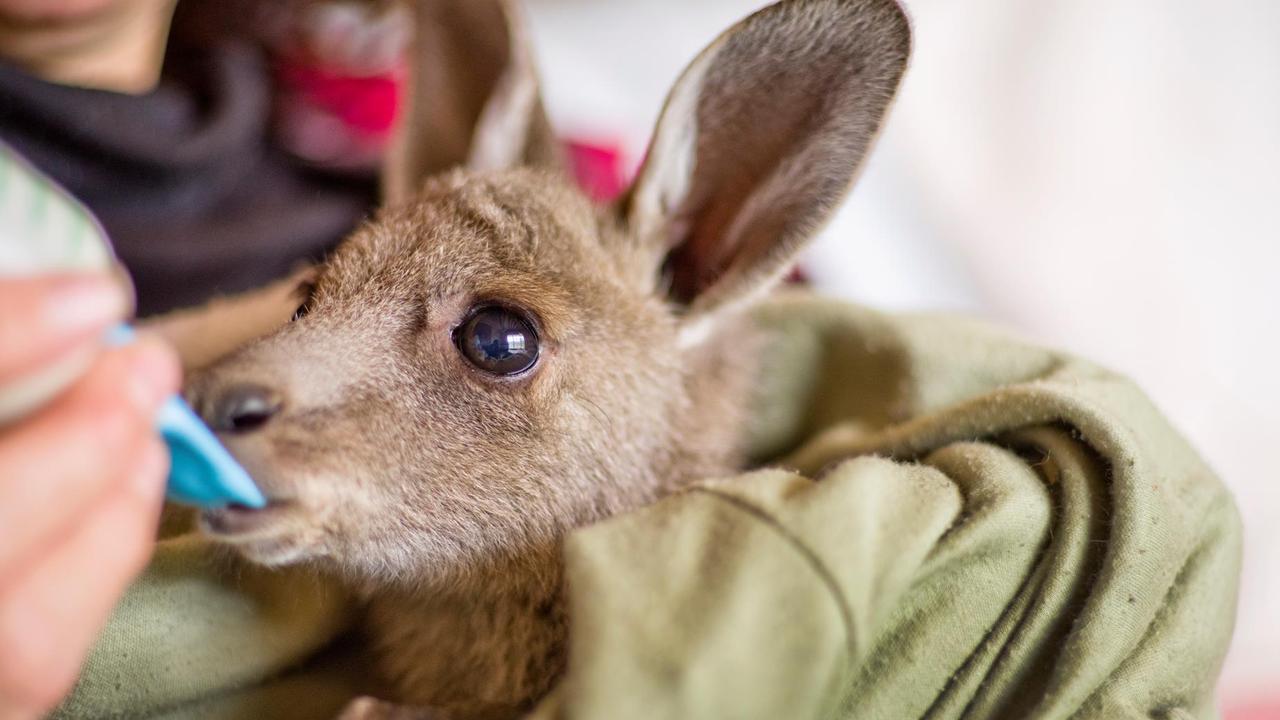Mark Skaife: Celebrating the Holden Commodore – a car that steered the nation
It was the ultimate family car, a motor racing powerhouse, and a national icon. Mark Skaife pays his respects to the Holden Commodore, and sheds some light on where the beloved model got its name.

VIC News
Don't miss out on the headlines from VIC News. Followed categories will be added to My News.
Commodore will stand tall in the Australian automotive landscape as one of the most successful nameplates in the history of local manufacturing.
More than just a brand, it is a symbol which embodies the true values and initiatives that drove Holden to the heights of vehicle building in this country.
Proudly, the locally-built variants were renowned as the best rear wheel drive car in the world from a value-for-money perspective.
More importantly for car lovers they were fun to drive and catered for a spirited, enthusiast market.
It was a car that from inception polarised traditional opinion.
I will always remember growing up on the NSW Central Coast in Wyong when the first Commodore was delivered to Wyong Motors and my father told me it was red and ‘you should walk up and have a look mate’.
My family’s tyre and automotive business was only a couple of hundred metres away from the local Holden dealer and I couldn’t wait to take Dad’s advice and check it out for myself.
The dealer principal was a gentleman named Max Levenspiel who was immensely proud of the new SLE Commodore front and centre on the showroom floor for $10,500 RRP — first car I’d seen with wipers on the headlights … wow.
I was 11 and was blown away. It was so far removed from existing models.
The styling was so distinctly different — smaller than a Kingswood, bigger than a Torana, chiselled nose profile, extremely modern and sophisticated with European design trends and beautiful new-age dimensions (originally derived from the Opel Rekord in Germany).
The car had a profound impact on me — and I wasn’t alone.
It was destined to become Australia’s largest selling car for 15 years straight, dominate Australian racetracks and be the mainstay of General Motors subsidiary Holden for roughly 40 years.
The research for Commodore started in 1971 and was initiated by the mid-70s energy crisis. The research indicated strongly that a smaller vehicle architecture was required to counter the larger, fuel guzzling current models. So size and social responsibility was key to the planning and execution.


Holden’s merchandising manager John Crennan was the man in charge of launching Commodore into the Australian market. It was a bold plan with substantial funding attributed to the rollout — $6m (CPI today equivalent circa $30m) was the one-off launch budget in 1978 approved by Detroit to ensure everyone in Australia from day one knew Holden was serious about the new Commodore replacing Kingswood and retaining its coveted number one leadership status.
Heartland Australia loved Holden, with its catchy war cry anthem — ‘Football, Meat Pies, Kangaroos and Holden Cars’ during the ‘70s. And in those days proper marketing money was spent on delivering the message loud and proud that would drive people into Holden showrooms.
Further to the passion for Holden, Australians cherished the Commodore as a major part of Holden’s DNA.
Local design and serious engineering prowess, headed up by the talented US designer posted to Australia Leo Pruneau, meant the respective models were designed for Australian conditions and appealed to our unique lifestyles, demands and remote geography.
It could be urban-myth but I’m reliably informed that the name of Commodore was hand-picked by the 1978 Holden sales director John Bagshaw, who was an Olympic sailor and a frequent patron of the Royal Brighton Yacht Club, hence the sailing connection and heavyweight bias towards the Commodore model name.
Little did he know it would go onto become the organisation’s biggest success and often referred to Holden in the modern-era as the ‘Commodore car company’.
Commodore — and Ford’s famous counterpart nameplate Falcon — were symbolic family vehicles across the Nation.


They were parked in driveways and garages of middle Australia.
They were aspirational models which became significant parts of our social fabric, exhibiting cultural values and brand loyalty and creating this red versus blue tribal mentality similar to Labor versus Liberal, Collingwood versus Carlton, NSW versus Queensland, Holden versus Ford — all epitomising true authentic rivalry which has helped shape our great country.
Commodore’s racing success amplified the widespread industry claim of ‘Win on Sunday … Sell on Monday’.
National press advertising and television commercials celebrated Brock, Lowndes, Whincup and myself as quasi brand ambassadors inextricably linking us to the Holden brand and Commodore mantle.
For many years I was fortunate enough to be the face of the brand, where almost 95,000 units were sold in 1998.
It remained Australia’s biggest selling car until 2011.
The Holden sales and marketing gurus of the day, when Holden celebrated roughly 22 per cent market share, were John Elsworth and Megan Stooke and they were responsible for me doing a succession of television commercials dubbed ‘I’m a Control Freak’.
Holden genuinely had control of the market, the messaging and the product — Commodore was king.
I joined the factory Holden Team (HRT) in 1997 to join Peter Brock in an attempt to win his 10th Bathurst title and replaced ‘Peter-Perfect’ the following year at the request of Holden Special Vehicles (HSV) boss, John Crennan.


People often ask my fondest memory of racing Commodores for the factory team and, although I was extremely lucky to win championships and Bathursts, the win in 2002 with my good friend Jim Richards not only won Australia’s biggest race but clinched the championship for the third time in a row … these were the glory days of HRT.
Crennan, formerly at Holden, had set-up HSV after the demise of the Brock led outfit — Holden Dealer Team (HDT) — and was influential in making the Holden Racing Team and Special Vehicles organisations link-up properly for the motorsport enthusiast market.
These racebred-enhanced road cars were the benchmark in making a connection from motorsport to more discerning consumers and critically demonstrated that, as the sport of the industry, motor racing was a key marketing platform and sold cars (more than 4500 units in 2007).
HSV’s tagline of ‘I just want one’ was classic Australian laconic language for people aspiring to own a performance Holden and it proved to be ‘petrolhead/enthusiast’ heaven. It created a ‘halo-effect’ for the entire Holden brand.
At it’s height Commodore captured the hearts and minds of mainstream Australia, but what now? Critics would certainly say the latest fully imported German variant is NOT a Commodore and the market has judged it accordingly.
This week Kristian Aquilina, Holden’s interim Chairman and Managing Director, explained the market situation well by saying, “the large sedan was the cornerstone of Australian roads for decades”.
Further he acknowledged, “that the decision to retire the Commodore nameplate had not been taken lightly by those who understand and recognise it’s proud heritage”.


He reinforced the modern buyer transition towards an SUV model line-up adding “that now with more choice than ever before, customers are displaying a strong preference for high driving position, functionality and versatility of SUV’s and utes”.
Brutally as a Holden loyalist, let’s hope this decision to transition away from Commodore works out to be similar to the original reason for the Commodore introduction — based on the evidence of buyer preference, known landscape changes and significant market trends towards SUV’s and a very definite and pronounced step-change away from large sedans.
Collectively, it’s acknowledged that this transitionary period will demand strong leadership and cohesion with the dealer network which, combined with quality market research and proper product planning policy, delivers Holden, as an iconic Australian brand, a robust and sustainable future.
It would be remiss of me not to mention the outstanding achievements of the thousands of men and women who dedicated their working lives to bringing Commodore from concept to reality for over 40 years of model lifespan. Sincere congratulations to ALL — you’ve been an incredible team.
Personally, I can’t wait for the new Corvette to arrive in late 2020 — this is a product which will definitely inspire the enthusiast.
Originally published as Mark Skaife: Celebrating the Holden Commodore – a car that steered the nation


